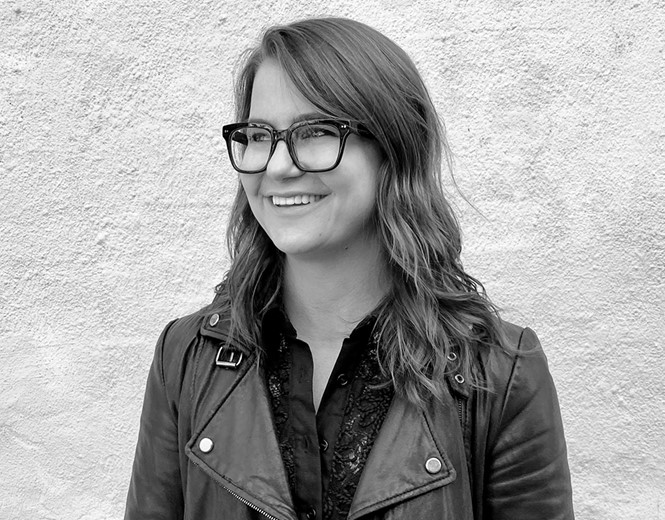Five minutes with Rebecca Williams

Rebecca Williams, design director at BrandOpus, discusses with Transform her passion for all things design and illustration in the world of brand development.
How much have technological advances across your 15-year career improved the process of designing visual assets?
Technology has without a doubt helped us be more efficient, but the paradox is our brains still need the same time to dream, think, wander, strategize and react to solving design challenges. It has made very practical things happen more seamlessly, but I’m always interested in how we can use these advances to allow more time for the creative organic processes to occur. There is something unparalleled in going back to analogue – sketching, exploring, and disconnecting from screens. Some of the best inspiration comes from noticing a sign on a walk, or even a piece of trash. In my mind, tech should be used as a tool to supplement the creative process, not replace it.
What considerations go into designing a new typography for a brand?
What considerations go into creating anything from scratch? Not dissimilar to cooking, one of my favourite things to do, considering typography is one step in a recipe, is the totality of the brand. When you want to create a dish from scratch you consider every element, such as what type of onion you use will affect flavour, in addition to how you cook it. Typography is much the same. It’s an ingredient that plays an integral role in building a strong design, which sets the tone for the overall look and feel. Typography also affects a myriad of things, from the rest of the packaging and brand world, to digital. With all that being said, it of course depends on the brief! Is this a new brand or a refresh? What needs do they have and what is the task they are trying to tackle? What are they trying to convey through their wordmark? So much can go into designing typography for a brand, no matter how ‘simple’ a wordmark can appear.
How important is it to take risks when developing a corporate identity? Is it ever best to play it safe?
It’s not a question of risk vs safe. It’s what the client or brand wants to accomplish by taking on a redesign or creation of a new brand. The corporate context is changing, even with more traditionally conservative markets, such as banking. Through the growth of crypto and fintech, we’re seeing the visual language adjust to better appeal to a changing customer. To stick to dominant codes may mean missing a chance to tap into a whole new market. We should always challenge clients when we feel strongly that there is a bigger opportunity for their brand, but in a way that is meaningful and stays true to the brand.
How much does the region a brand is from impact the kind visual assets produced? Does this factor ever cause challenges?
There are always nuances and limitations that need to be considered when designing for brands in unfamiliar or different regions. But what is truly great about getting to work with different regions and markets is just that; learning about new cultures, how people speak, understand, and perceive design. Subtle colloquialisms and cultural and regional trends play a big part in designing for a brand in a specific location. You could be limited in subject matter or stylistically, but that is part of the beauty of being a designer, we are innate problem solvers. At a brand identity level, it’s also essential to maintain core brand consistency to establish and build brand salience in order to make a truly global brand.
In a fast-moving world, is it becoming a requirement for brands to continually update their brand identity?
As culture shifts it’s important to understand that the meaning you’re conveying with your brand is still relevant. Not based on transient trends, but long-term shifts. Sometimes this requires a review of the core logo, but other times it may require a shift across the wider brand presence/experience, from brand world to social media or communications. Branding can remain core and evergreen, so long as there is a fluidity and understanding of the world around them. Nike would never change its logo – but it adapts to the market in which it lives.












